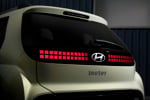However, the restructure will mean just 35-40 partners controlling 25-30 major market areas, with a handful of standalone sites in more rural locations.
The driving force is profitability.Volkswagen Vans believes that developing a market area strategy with fewer partners will give better returns for a sensible level of investment.
Not all the 85 dealerships will offer a full range of services. Some will concentrate on sales, supported by aftersales points and delivery outlets. Others will combine all services.
Robert Hazelwood, who became head of LCV in June 2006, admits a gasp went round the room when he made the announcements to the retail network. But he insists that Volkswagen will not take an aggressive stance to the reorganisation.
“It will be in cooperation with the network and it will happen over time – it will be at least 18 months to two years before it is fully rolled out,” Hazelwood says. “We have challenged the network to be part of the future.”
He has recently completed a two-day roadshow where each van centre put forward its business proposal. They were asked to focus on ambitions, both now and in the future, and investment ability.
Volkswagen has laid out a list of criteria for each van centre to meet, mostly based around staffing levels.
#AM_ART_SPLIT# They include a dedicated head of the CV business, additional sales staff and specialist F&I managers to improve finance penetration, currently 25%. Dealers will also need to prepare for greater capacity by investing in more service bays, technicians and master technicians. “Only 20% of the network won’t move or expand,” adds Hazelwood.
It’s not the first time the network has undergone radical restructuring. Ten years ago, 94 Volkswagen dealerships sold around 10,000 vans as an addition to their car business.
Then the car and van franchises separated, at the same time as the Volkswagen and Audi car showrooms split. Last year, 67 dedicated van centres sold almost 27,000 vans, a record high. “This sums up the reason behind that separation,” says Hazelwood. “The car dealerships could develop their business and the van dealers could develop and expand their business.”
Now, with the proposed new structure, he hopes to move the business into a new phase. Dealers have already sold more vans in the first quarter of 2007 than in any other. They sold more than 4,000 vans in March for the first time; and they have an order bank of more than 8,000 vehicles.
“The momentum is very encouraging – this business is on a roll,” Hazelwood says. “We want to sell 30,000 vehicles this year and 40,000 in the medium term. We are now a sizeable individual business for our partners.”
Last year, dealer returns averaged 1%, while the upper quartile hit 2.9%. Almost one-third of the network made more than £150,000 pre-tax profits, while some larger sites made £500,000. Hazelwood wants a network return-on-sales average of 2%.
New models are important – the Crafter went on sale last year and a new pick-up is due in 2010-11 – but the most profitable dealers are those who upsell on accessories and conversions.
“Vans aren’t more profitable than cars, but they offer more opportunities with the conversions,” Hazelwood says. “There is no such thing as a standard van – around 80% have an option or accessory fitted.”
A new brand focus and network reorganisation needs a new business statement. So replacing the slightly odd “apparently Volks-wagen also makes cars” tagline is the rallying cry “let’s go to work”. Volkswagen hopes dealers and customers will heed its call.
#AM_ART_SPLIT# New models
Two all-new vans will take Volkswagen Vans to a five-model line-up by 2010-11. It will compete in each segment of the market.
The Caddy Maxi is a Ford Transit Connect-sized rival based on a stretched Caddy platform. Due in 2008, it will also be available in a seven-seat shuttle version. In 2010-11, VW will launch a pick-up model that will rival the Mitsubishi L200 and Nissan Navara. It will be offered in two versions – a robust workhorse built in Argentina and a lifestyle vehicle built in Hanover, Germany.
In between these two all-new models, Volkswagen will launch the facelifted Transporter, due in 2009.
Top five reasons to buy*
*Source: VW














Login to comment
Comments
No comments have been made yet.